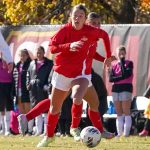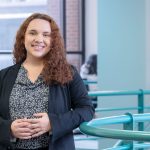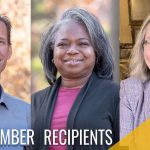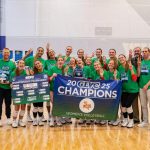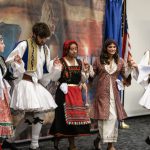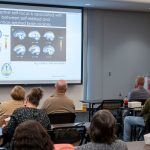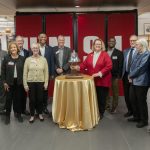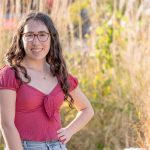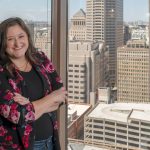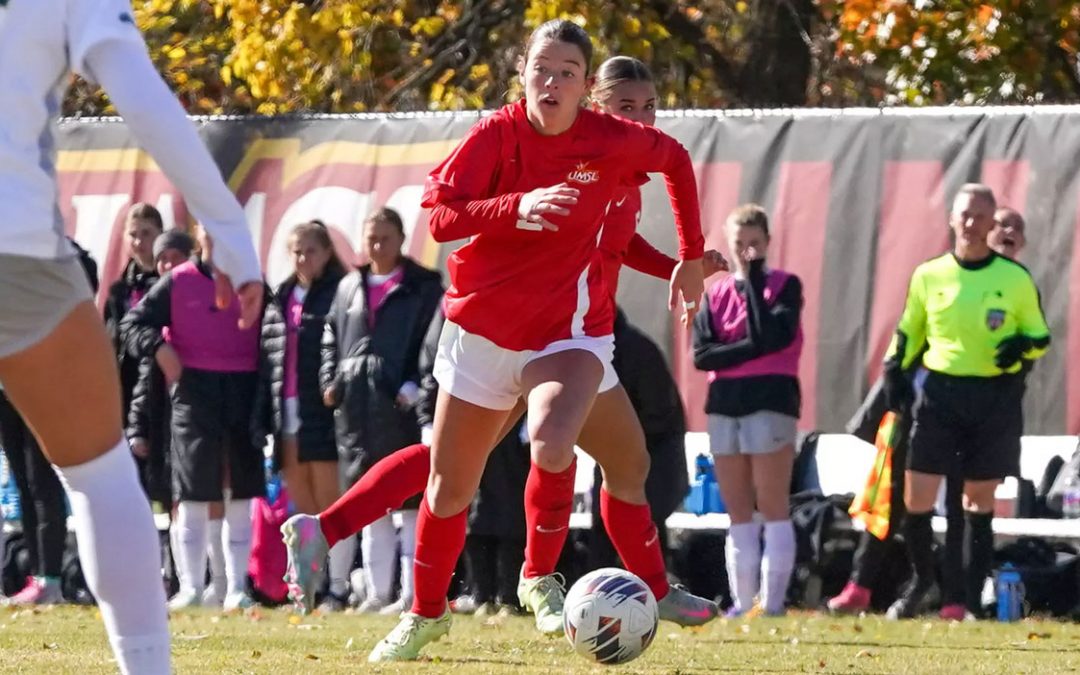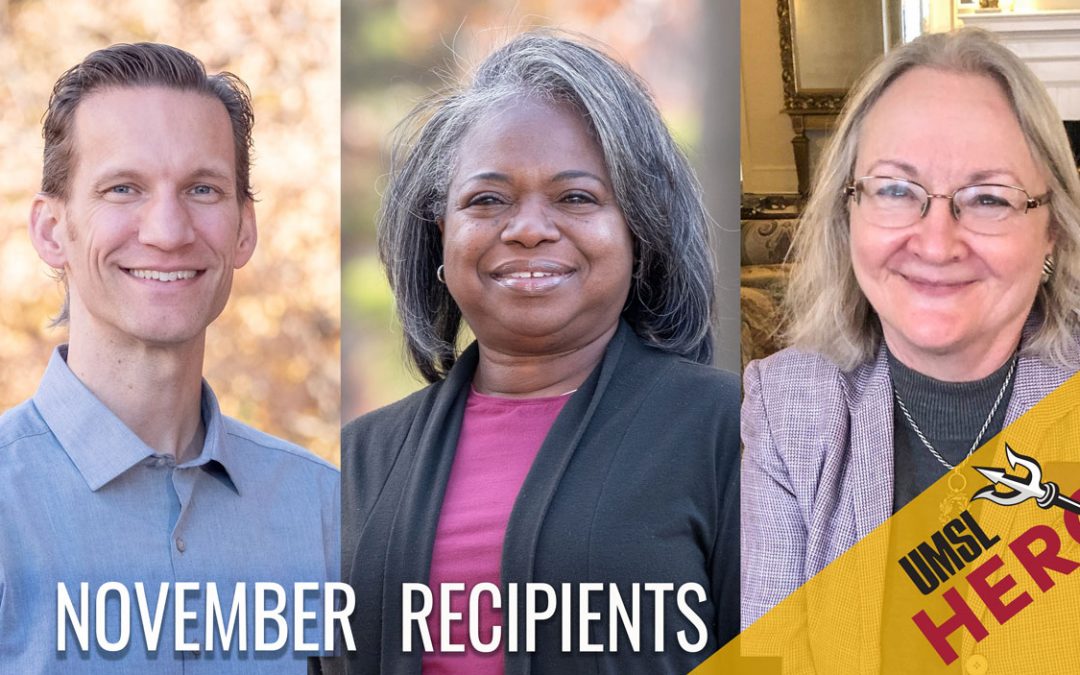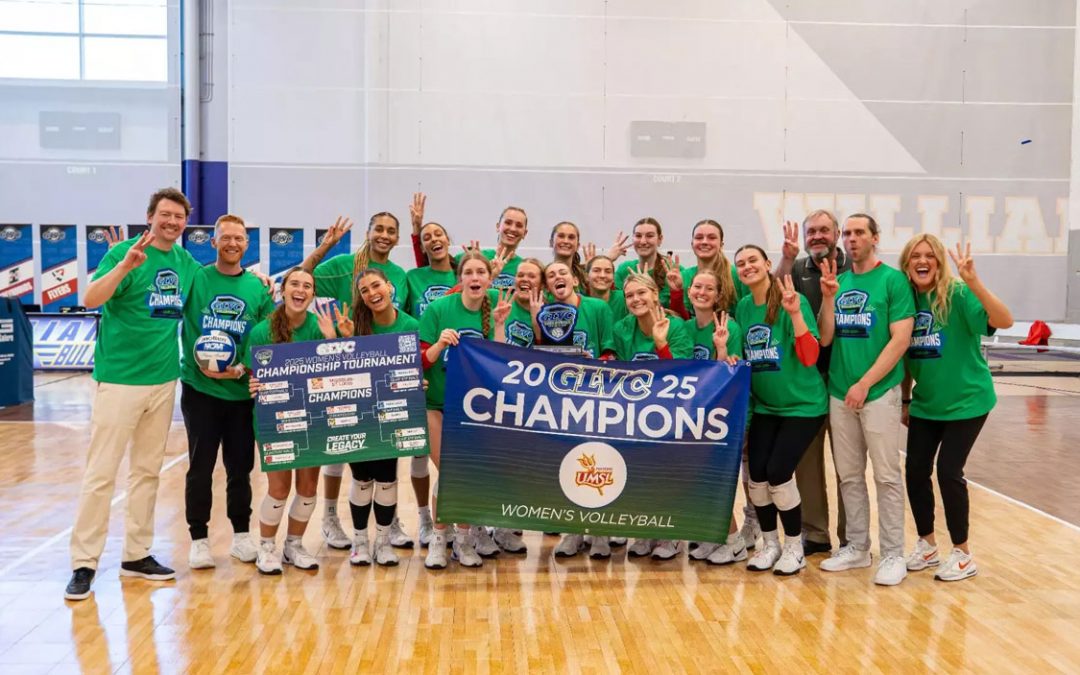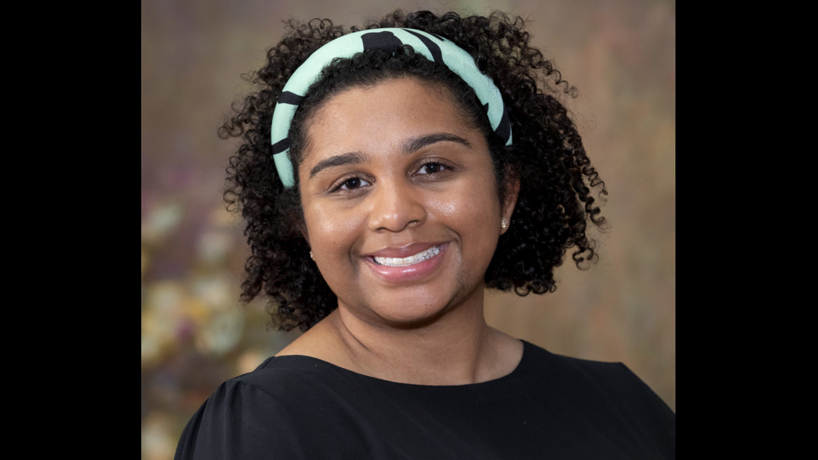
In August, the Saint Louis Art Museum named Delyn Stephenson one of two Romare Bearden Graduate Museum Fellows. The fellowship is designed to prepare graduate students of color seeking careers as art historians and museum professionals. Stephenson will gain hands-on experience in areas such as audience development, curation and public programming. (Photo courtesy of the Saint Louis Art Museum)
During her time at the University of Missouri–St. Louis, Delyn Stephenson had the opportunity to work at some of the most prominent cultural institutions in St. Louis including the Griot Museum of Black History and the National Blues Museum.
Stephenson is continuing to work with the city’s preeminent cultural institutions after graduating from UMSL. In August, the Saint Louis Art Museum named her one of two Romare Bearden Graduate Museum Fellows.
The prestigious paid fellowship is named for noted Black artist Romare Bearden and is designed to prepare graduate students of color seeking careers as art historians and museum professionals. It’s part of the museum’s commitment to increasing diversity in the field.
For the first time, the Saint Louis Art Museum expanded the 30-year-old program from a one-year paid fellowship to a two-year paid fellowship. Because of the change, the museum welcomed two fellows this summer. Stephenson is a one-year fellow, while Shaka Myrick is the inaugural two-year fellow.
“It was very exciting,” Stephenson said of learning the good news this summer. “It was a relief. I was very, very nervous, but also I knew everything happens for a reason. When Renée Brummell Franklin, the Romare Bearden supervisor, did call, it was one of the best days so far in my career.”
That now flourishing career started with family road trips as a child.
“Anytime we were traveling, we would stop at either a museum, or even conservation sites – natural history-type stuff,” she said. “I’ve always loved history. I’ve been exposed to it my entire life. I also like the visual aspect of art, especially the meanings people can take away from images. I’ve always just found that very interesting.”
There were many stops over the years, but the Art Institute of Chicago was her favorite.
Despite a healthy interest in art and history, Stephenson decided to study political science at the University of Missouri–Columbia after graduating from Ozark High School. Upon entering the program, she realized it wasn’t something she could do for the rest of her life.
An art history class grabbed her attention while she mulled over her options. Stephenson wasn’t sure what she could do with an art history degree, though. After researching the matter, she decided to change her major and then pursue either a graduate degree in art administration or museum studies. She also took several business courses to round out her education.
Andrea Miller, a PhD student at MU, recommended UMSL’s Museums, Heritage and Public History program after having a positive experience in it. At the same time, Stephenson’s mother had recently moved to St. Louis, which made the decision that much easier.
The program impressed her immediately.
“I loved it,” Stephenson said. “I liked the small class sizes. I liked that I really got to know my professors. I think the UMSL program does a really great job of being a part of the St. Louis community. I really got to learn a lot about different institutions here and the history of St. Louis and how historians can work for the community. That was my favorite part.”
The Griot Museum of Black History was one of those institutions.
As part of her practicum, Stephenson and a handful of other UMSL students worked directly with Lois Conley, the founder, president and CEO of the museum, to produce “Still We Thrive: The Neighborhoods of Fountain Park, Lewis Place, and The Ville.”
Year by year, the historically Black St. Louis neighborhoods of Fountain Park, Lewis Place and The Ville lose some of the links to their rich past as residents move away and historic buildings are torn down or replaced. Stephenson and her classmates did what they could to preserve the memory of these culturally significant, yet often overlooked, places.
They helped create, research and produce the exhibition, interviewing residents of the three neighborhoods and pulling information from a variety of archives.
“Places like Fountain Park and Lewis Place, the community’s disappearing, and the stories are getting lost,” she said. “Hearing their stories today, I think gives a face and a name to these neighborhoods.”
Seeing the final product on display was moving for everyone involved.
“It was amazing, especially because it was in development for such a long time,” Stephenson said. “We had the individuals we interviewed and photographed come, and just seeing how excited they were to see their neighborhoods in a museum that was created to serve African Americans in St. Louis was amazing.”
In addition to Stephenson’s work at the Griot Museum of Black History she also interned at the Contemporary Art Museum St. Louis and worked at the National Blues Museum. She knew her next step was to apply for the Romare Bearden Graduate Museum Fellowship.
Stephenson became aware of the fellowship as an undergraduate, noting its renown in the museum world. She didn’t get the fellowship her first time applying. However, it turned out to be a great learning experience and enabled her to strengthen her second application, which won her the fellowship.
The fellowship provides hands-on experience and is tailored to fellows’ backgrounds and interests. Stephenson anticipates having a hand in a little bit of everything. So far, she’s been focused on development and fundraising, which she did at the National Blues Museum.
“I’m doing more of that here,” she said. “Obviously, the art museum’s on a bigger scale. So I’m working with the development department and also getting to do a lot of audience development – the programming, engagement with the community leaders and other institutions, which is a really big point for the art museum right now.”
One project she’ll work on is the museum’s annual Kwanza celebration, which requires significant outreach efforts to the Black community in St. Louis.
In addition to advancement and audience development, Stephenson will be involved in interpretation – education outside of the classroom that helps people connect to important natural, cultural and historical resources. In particular, she’ll help plan virtual field trips for students.
Stephenson isn’t sure what the future holds after the fellowship, but in a perfect world, she knows where she would be.
“Dream museum – I would love to work at the Met Cloisters, which is in New York City,” she said. “It’s the home of a lot of their medieval art collection. I got to take a lot of medieval art classes at the University of Missouri, and I would love to work someplace that has that kind of collection and figure out different ways you can engage with a community like New York City.”


